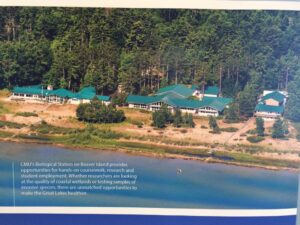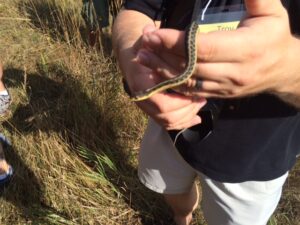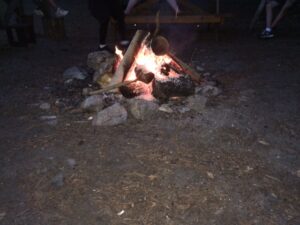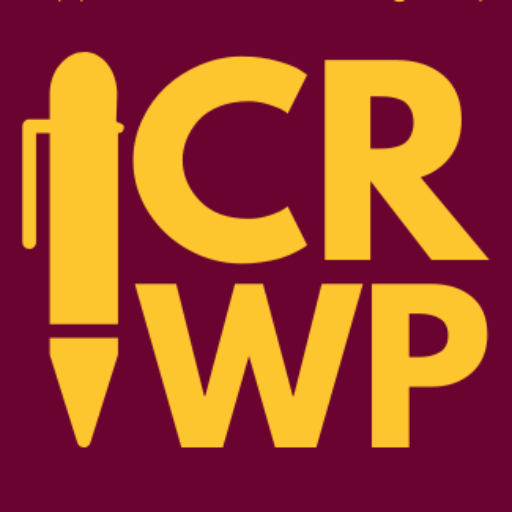I was reminded again this past summer that Michigan is truly one of the most beautiful places on this planet …
 At the beginning of the 2015-2016 school year, a unique opportunity was presented to my science colleague Jeremy Winsor and me to apply for a week-long science literacy professional development at the Central Michigan University Biological Center located on Beaver Island, Michigan. The event was led by the Center for Excellence in STEM Education and the Chippewa River Writing Project. Several schools from the middle of the state were represented by a team of teachers looking to improve the relationship between science and literacy within their school districts. It was a week promising instruction on how to implement reading and writing strategies into the already complex subject of science.
At the beginning of the 2015-2016 school year, a unique opportunity was presented to my science colleague Jeremy Winsor and me to apply for a week-long science literacy professional development at the Central Michigan University Biological Center located on Beaver Island, Michigan. The event was led by the Center for Excellence in STEM Education and the Chippewa River Writing Project. Several schools from the middle of the state were represented by a team of teachers looking to improve the relationship between science and literacy within their school districts. It was a week promising instruction on how to implement reading and writing strategies into the already complex subject of science.
Fast forward several months to August, and my colleague and I were watching the waves crash on the side of the Beaver Island Ferry while we crossed Lake Michigan along with colleagues from other schools. Schools included: Fulton, Central Montcalm, St. Louis, Carlton, Saginaw Township, and Bridgeport. Though all of us had a basic idea of what we were about to do for the week, we weren’t prepared to begin what would be one of the best professional development experiences of our teaching careers.
 The very first full day of the institute quickly had us thinking about what science is and deciding what to teach in our units. From there, we were introduced to the science writing heuristic, which was discussed in the Negotiating Science: The Critical Role of Argument in Student Inquiry one of the text we read for the institute. The discussion of inquiry and how it dominates the Next Generation Science Standards propelled us to pile into vans and venture out to the biological preserves that are embedded deep in the center of the island. There, as participants, our first task to help us understand that observing different species of snakes can be an experiment. As we pulled up flat boards where snakes might be hiding, everyone recorded their findings. It was a simple activity that everyone was a part of to help understand that something as simple as observing can be done with our students in our own classroom. With plenty of little screams, while others gave chase, all of us observed and held plenty of Garter, Green, and Ring Necked snakes.
The very first full day of the institute quickly had us thinking about what science is and deciding what to teach in our units. From there, we were introduced to the science writing heuristic, which was discussed in the Negotiating Science: The Critical Role of Argument in Student Inquiry one of the text we read for the institute. The discussion of inquiry and how it dominates the Next Generation Science Standards propelled us to pile into vans and venture out to the biological preserves that are embedded deep in the center of the island. There, as participants, our first task to help us understand that observing different species of snakes can be an experiment. As we pulled up flat boards where snakes might be hiding, everyone recorded their findings. It was a simple activity that everyone was a part of to help understand that something as simple as observing can be done with our students in our own classroom. With plenty of little screams, while others gave chase, all of us observed and held plenty of Garter, Green, and Ring Necked snakes.
Whether it was snakes, chipmunks, macro-vertebrates, or plant life, Beaver Island can unfold, in all of its beautiful corners, the wonders of science, and it became clear almost instantly why the Science Department at CMU has invested in its biological center year after year. Each day produced examination of new creatures and generated thoughts about the reading and writing strategies that we might embed into our science classrooms. Three strategies that we dug into were:
- Text Rendering – Identify a “word,” “phrase,” and “sentence” that captures the main idea.
- This is a type of annotation that students can do to help them comprehend their reading and build vocabulary. It is also a very low stress activity for students.
- Building Fluency – Educators should be building fluency through reading independent- level texts rather than instructional texts that need scaffolding. Frustration-level texts should never be read independently.
- Sites such as NEWSELA can help teachers level reading for students who may not be at grade level with their reading. Students who can’t read a text aren’t going to attempt the reading if they know it is too hard.
- Building Text Sets – Teachers can expose students to non-fiction text through highlighting articles around one specific topic such as Human Impact. NEWSELA is a great site for building text sets and finding pre-built sets.
Though some strategies weren’t new to English teachers, they were new and very helpful to science teachers and could easily be implemented to help with building better literacy skills in students across the curriculum.
By the end of the week, science and literacy were coming together both figuratively and literally. Each team of teachers was asked to create a lesson, unit, or curriculum that encompassed both the science and literacy strategies that we learned throughout the week. My colleague Jeremy and I built on our Salmon in the Classroom Project, and with me teaching science this year, I felt I had a superior advantage because of teaching both science and English. Though the Salmon in the Classroom Project is something that we started in the past, we have continued to build on it each year. While on Beaver Island, Jeremy and I were making connections to the Next Generation Science Standards with the project as well as seeing how we could further the project into something with aquaponics for high school students.
 The week at Beaver Island brought both learning and fun to science education and gave teachers more insight on how to proceed with the Next Generation Science Standards. With more literacy being implemented into different subject areas, professional development such as the Beaver Island Institute is the training and experience teachers need. At the end of the day (and week), teachers created tools and strategies they will be able to immediately implement into their own classrooms. The Beaver Island Institute gave each educator just that and much more. It allowed us to collaborate and build both professional and personal relationships with colleagues from across the state. The Chippewa River Writing Project and the Center for Excellence in STEM Education brought another professional development opportunity to teachers that was both unforgettable and career changing. I feel blessed that I was given the opportunity to grow as a professional and to strengthen my teaching alongside a great colleague.
The week at Beaver Island brought both learning and fun to science education and gave teachers more insight on how to proceed with the Next Generation Science Standards. With more literacy being implemented into different subject areas, professional development such as the Beaver Island Institute is the training and experience teachers need. At the end of the day (and week), teachers created tools and strategies they will be able to immediately implement into their own classrooms. The Beaver Island Institute gave each educator just that and much more. It allowed us to collaborate and build both professional and personal relationships with colleagues from across the state. The Chippewa River Writing Project and the Center for Excellence in STEM Education brought another professional development opportunity to teachers that was both unforgettable and career changing. I feel blessed that I was given the opportunity to grow as a professional and to strengthen my teaching alongside a great colleague.
Jeremy Hyler (@jeremybballer) teaches middle school language arts and science in Middleton, Michigan, serves as a department co-chair, and is a Co-Director of the Chippewa River Writing Project. He is co-author of Create, Compose, Connect! Reading, Writing and Learning with Digital Tools and From Texting to Teaching: Grammar Instruction in a Digital Age (May 2017).

This work is licensed under a Creative Commons Attribution-NonCommercial-ShareAlike 4.0 International License.


Leave a Reply
You must be logged in to post a comment.